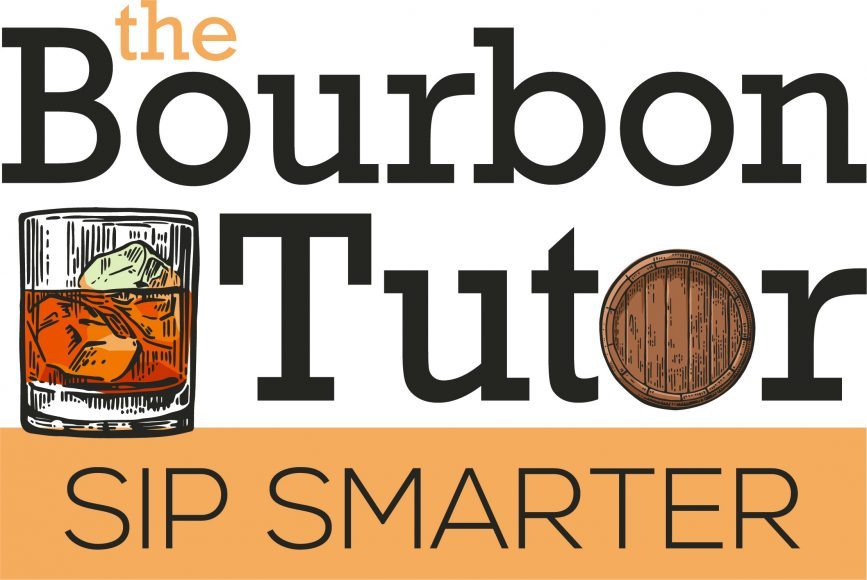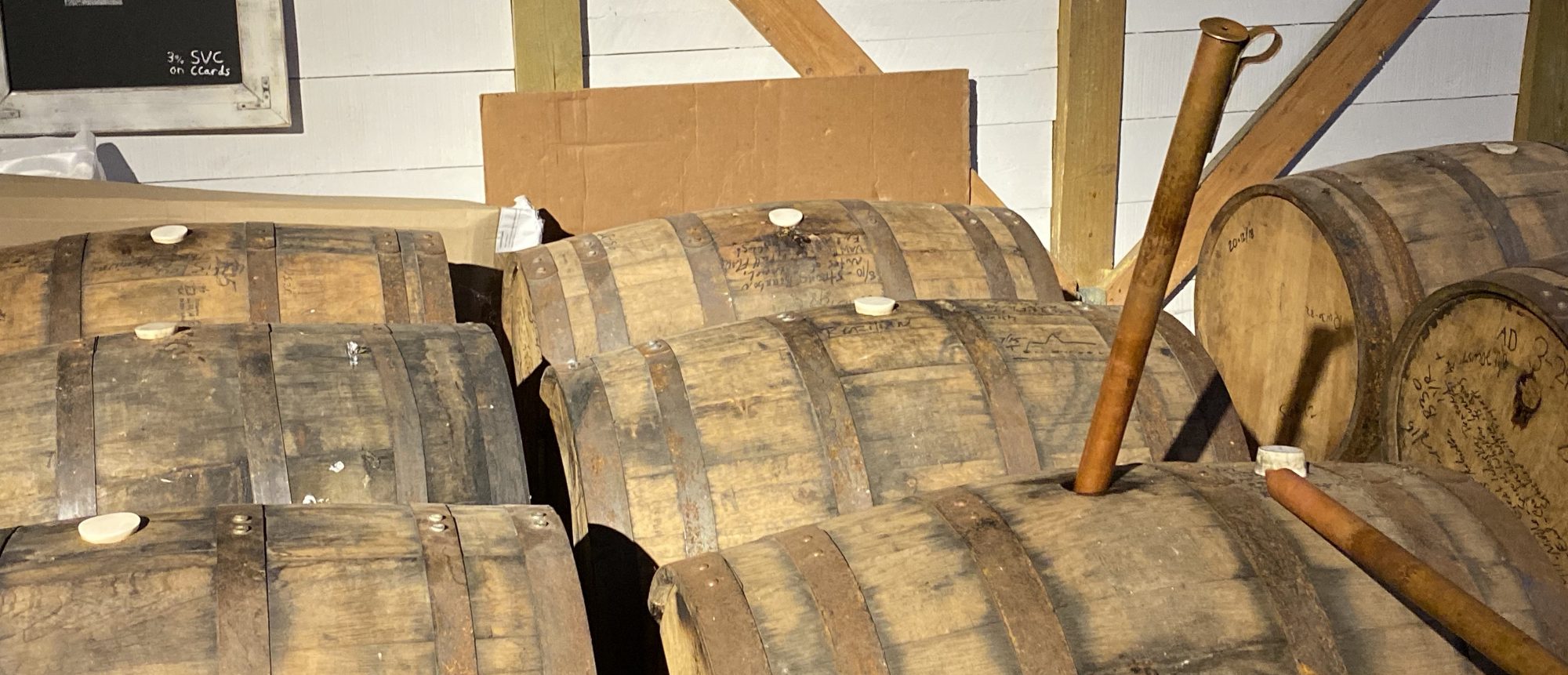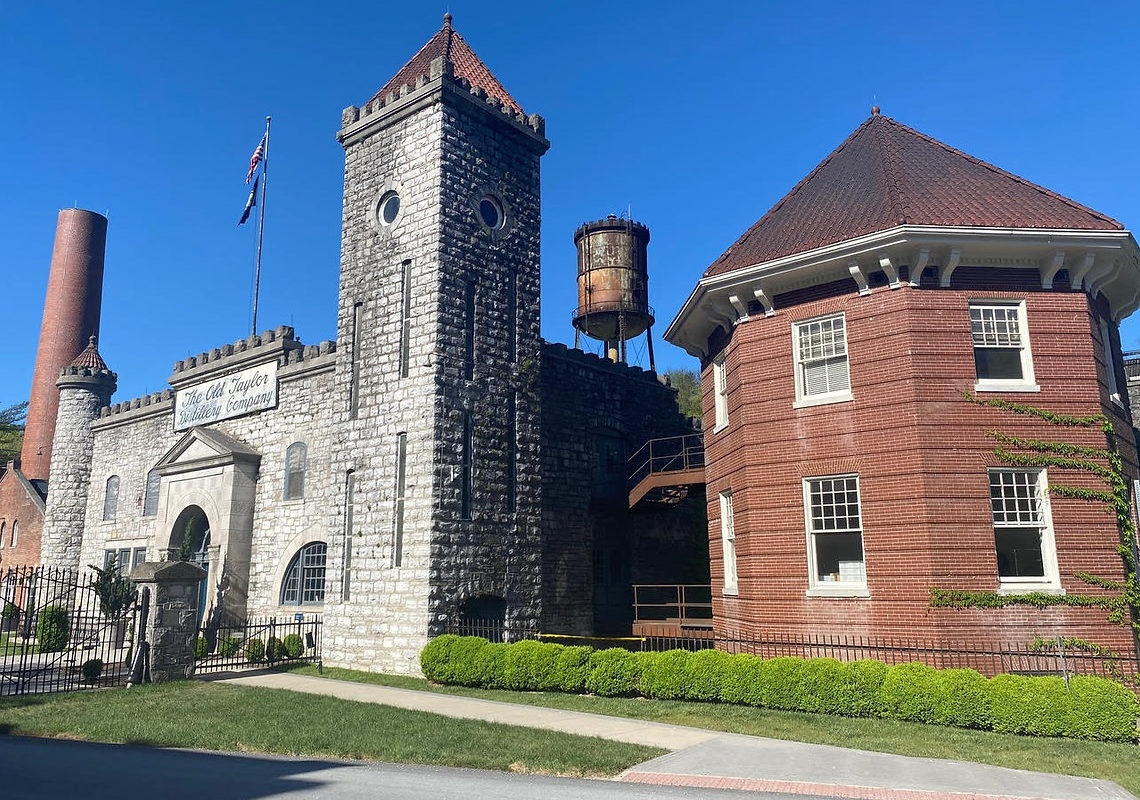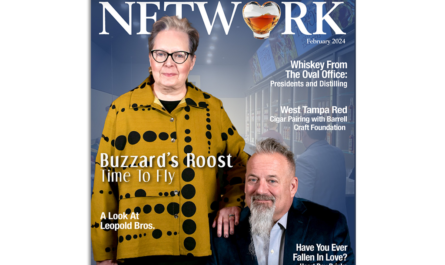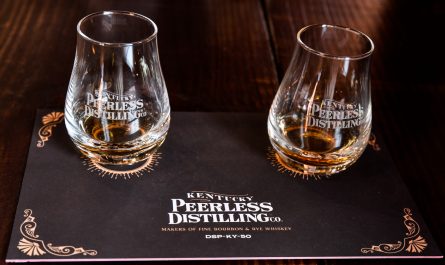Like an ancient Mayan city emerging from a lush jungle in Central America, the Castle & Key Distillery has been bringing its historic property slowly back to life since 2014. It sits on 113 green acres along McCracken Pike about six miles outside of Frankfort in Woodford County, Kentucky. It was once the thriving Old Taylor Distillery more than 130 years ago, and then a host of other distilleries and enterprises, before falling into near-total ruin.

The spectacular property includes a limestone, Scottish-style castle, an English-style sunken garden, a winding botanical trail, a springhouse surrounding a 1400-gallon stone aquifer that is fed by limestone-infused water from five springs, an indoor event space where barrels were once disassembled, and a restored train depot that once welcomed visitors from around the country.
Oh, by the way, the distillery is once again fully functional, making vodka, gin, and rye and bourbon whiskey.


On a bright and warm spring day in mid-May, I met with Brett Connors, Castle & Key’s Blender and Brand Ambassador. We sat on wooden Adirondack chairs beside Glenns Creek, which borders the western side of the property. The constant hum of water rushing down to the Kentucky River was soothing background noise. Connors did his best to channel bourbon industry icon, Colonel Edmund Haynes Taylor, Jr. and graciously talked me through the history of the distillery property.
Beginning as a farmer’s gristmill making moonshine in the early 1800s, the property evolved through two other distilleries. After his time at O.F.C. Distillery in Frankfort (now Buffalo Trace Distillery, which still makes Col. E.H. Taylor Bourbon today), the Colonel came on the scene at McCracken Pike in1887.
“E.H. Taylor was a hundred years ahead of his time in a lot of ways,” Connors said. “His vision was to elevate the industry as a whole and make his products more premium, like the other categories of (more preferred) spirits.”
In many ways, Taylor and his Old Taylor Distillery ushered in the early days of bourbon tourism. “He really wanted to make this place a showplace,” Connors said. “Not only was he making a high-quality product, but he also wanted to connect his vision to his aesthetic. He knew he was making a premium good, so he built a rail line all the way out from Frankfort. Trains came here from New York, New Orleans, and Chicago.”
“Taylor would bring in visitors for parties and galas: He’d let you come out here to taste his whiskey and enjoy the site,” Connors said. “His thought was if you’re enjoying a premium product, you’d want to do so in luxury. I think you see that resonate in modern bourbon tourism. Most of us are standing on the shoulders of what he and others were doing in the 1890s.”
Sachi Howard, Castle & Key’s Marketing Manager, joined us, and I asked her about the origin of the new distillery’s name. I granted her the obvious castle reference, but I wondered about the key.
“The reason why Col. Taylor chose this property, he said the mineral-rich, iron-free water here was the key to making good whiskey,” Howard said. The stone aquifer and wooden springhouse around it were built in the shape of a keyhole. Those same water sources are still used in today’s distilling process.
Prohibition shut down Old Taylor Distillery in 1920. The Colonel died shortly after that in 1923 at 93 years old. Post-Prohibition giant National Distillers (makers of 95 brands including Old Grandad and Old Crow) owned the facility next. National nearly doubled the size of the facility – distilling more than 600 to 1000 barrels a day. But the National CEO was a teetotaler who didn’t drink, so his heart was more in the chemical side of the business, according to Connors.
Unfortunately, that executive-level whiskey malaise coincided with the decline of Americans’ thirst for bourbon. The property saw distilling stop here in 1972, with bottling and aging continuing until the 1980s. Jim Beam Distilling was involved for a bit, but the property began to decay. After a stint as an antiques mall in the 1990s, an architectural salvage company purchased – and gutted – the property in the early 2000s. Everything from the railroad tracks that ran through the middle of the property, to metal racks that once held barrels, to copper and brass pipes and fixtures was removed. Connors said, “They removed two mint condition 45,000-barrel brick aging warehouses,” worth $13 million today.



Abandoned for another decade
And then the property sat, abandoned for another decade after that. Abandoned, that is, except for the constant stream of people who hopped the fence to wander the rambling ruins.
“People still walk in and say, ‘Yeah, we used to break in all the time,’” Connors said. “It wasn’t a big deal, it was just a cool place to break in, come party, tell spooky ghost stories.” There were even squatters, at one point, living in the crumbling buildings.
April Torbush was one of the people who explored the captivating property a couple of times during this period. Some of her photos are included with the story.
“I first saw the old distillery when some friends of mine and I took a wrong turn on our way to Woodford Reserve,” Torbush said. “Even in ruins, the property was hauntingly beautiful. We climbed the stone wall and looked around for a bit that day. I have always loved architecture and seeing the process of nature reclaiming abandoned places, so the first chance I had I went back with my camera. I loved the textures of rust and ruin and the contrast of degraded architecture of stone and steel construction with new natural growth. You could easily see how elegant and enchanting the buildings and the keyhole spring had been when the distillery was operational.”
Many of the key players in the whiskey world toured the property but found the prospect of reclaiming the decaying property too daunting. “No one could really pin down the exact economic investment down here,” Connors said, citing the near-total loss of equipment and property, with 80 percent of the buildings damaged.
But one day, the right person came along. The Castle & Key website says: “In 2012, Will Arvin came across photographs of the abandoned distillery. (Connors said Arvin “Googled ‘distilleries for sale.’”)
“At the distillery, Will found caved-in roofs, boarded-up windows and doors, and vegetations so overgrown he had to use a flashlight – even in the middle of the day – to navigate. But he felt an affinity for the property. It was then that he resolved to restore the historic bourbon icon,” the website continues.
Arvin, a Lexington attorney, brought in Wes Murray as a co-founding partner. In 2014, the two began the arduous, multimillion dollar task of restoring the property to its former glory of more than a century ago. Connors said the partners “had an initial perspective on the investment and it ended up being a lot more than that, but they didn’t balk at that.”
It took a year just to remove the overgrowth of trees, weeds, and dirt that covered much of the grounds. “You had to almost machete your way to the structures,” Connor said.


The area known as the Sunken Garden was so dense it revealed a storage building you couldn’t see. The original concrete pathways were discovered under a foot of dirt after the trees and bushes were cleared from the gardens modeled after England’s Windsor Castle.
Our tour took us into the limestone castle building which houses the production process. “When we came here it didn’t look like this,” Connors said. “All the glass was busted; the roof was missing on the left side. The assumption was that all the equipment was the totality of loss. No water, no sewers, no electric.”
“We got lucky,” Connors said. “A lot of times when we were cleaning it up, we were able to revitalize something, or retrofit something, or something was in better condition than we initially thought.”
The original cookers were upgraded and modified. All new lines for product, steam, water, and chilled water were added, a new conveyance system and mill brought in, along with 15 11,000-gallon tank fermenters. Four-grain silos from the ‘30s were able to be salvaged. A new Vendome Copper 32-inch column still distills 100 barrels a day.
Next door in the former red-brick power plant is The Boiler Room. It is now the distillery’s retail space. In front is a short section of railroad track (the only remaining on property) that was originally there for dumping coal, but was later covered in dirt and asphalt.
“We looked at it and said, as we do with everything, ‘Oh man, this is so cool, we’re going to keep it.’ Which is not always the most logical decision. For us, it’s about preserving the aesthetic, that balance of the old and new,” Connor said.
We finished our day in Warehouse B, at 534 feet, the longest brick aging warehouse of this single aisle design in the world. Its sibling, Warehouse A, collapsed decades ago. Col Taylor built them both in the early 1900s “just to show off” according to Connors.
During its National Distiller days, Warehouse B was called “the maneater” because of its single elevator with only one ground-level door on the end. Castle & Key has installed metal tracks on the floor to make rolling the barrels just a bit easier.
The partners were advised to raze the building, given the damage to its roof, racks and even the bricks. But 17-inch brick walls, heart pine floors, optimized airflow, and amazing humidity won the day. After a massive repair job, Warehouse B is again aging 35,000 barrels today. The bricks allow gradual warming and cooling. “You can’t replicate the environment that this warehouse exists in,” Connor said.
Another aging concrete structure, Warehouse E, got a new roof and some other upgrades, and today it houses 60,000 barrels.


A distillery reborn (again)
Today, The Springhouse around the aquifer is beautifully restored, sitting between Glenn’s Creek and Taylorton Station, the train depot Col. Taylor built. The depot is now home to Counter 17, a walk-up bar that will reopen this summer when tours begin again. The Sunken Garden has been lovingly restored with a working fountain and gorgeous landscaping. All the grounds and an interior event space called Shooking Building are available for weddings, elopement, parties, and other corporate events.
“We’re a bourbon distillery first and foremost, but not everyone drinks. We still want everyone to feel comfortable here, if they want to come out and enjoy the gardens and the grounds. Maybe they’ll tell their friends about us who do drink.”
April Torbush couldn’t wait to see the property after its resurrection had taken place. “I went back for one of the restoration tours after Castle & Key first opened and absolutely loved how they restored the property but kept parts of the ruin,” Torbush said. “They did an amazing job of honoring the full history and life-cycle of Old E.H. Taylor distillery.”
Public tours and other events were shut down during the pandemic and will open soon. With the pent-up interest, it shouldn’t take long to get back to the 50,000-visitor level they hit pre-pandemic. One event I’m looking forward to having back: the Spring House Music Series, a summer music series featuring local musicians, area food trucks, and free admission.
Until then, you can bring you own picnic (no outside alcoholic beverages) or just walk the beautiful grounds at Castle & Key on Thursday-Saturday from 10:30am-5:00pm and Sunday from 12:00pm-5:00pm. Reservations are encouraged.
This tireless restoration work has won awards, placed the Castle & Key Distillery on the National Register of Historic Places, and earned it the retroactive designation as KY-DSP 18. These “Distilled Spirits Producer” numbers are issued by the U.S. Federal Government for tax purposes. New distilleries today received five-digit DSP numbers in the 20000 range. “We love being a double-digit DSP,” Connors said. “It’s really cool.”

Reimagining how Kentucky Spirits are presented to the world
Today, Castle & Key is distilling between 30,000 and 36,000 barrels a year for themselves and other clients. The distillery’s vodka, gin, and rye whiskey brands are in the marketplace, with bourbon coming in the next year. Castle & Key products are available in Kentucky, South Caroline, Georgia, Tennessee, Indiana, and Texas. Growth into the northeast is expected in the coming year. Connors said growth will come slowly and not until an area can be fully supported.
We sat and sampled an array of Castle & Key products in Shooking Building, which once housed the deconstructing cooperage, breaking down barrels on the way to the next users. “We want this (vodka and gins) to be an introduction,” Connors said. “Because if you try this and you love it…wait ‘til you see what we do with whiskey.”
With Sacred Spring Vodka, Connors said, “Our idea was to have a vodka with a little more character, depth, and structure.” Sacred Spring Vodka gets its name from its water source in the Springhouse. It starts with Castle & Key’s bourbon new make that is redistilled into vodka.
Castle & Key is using a variety of unique herbs and botanicals for its Roots of Ruin gin, including coriander, chamomile, rosemary, ginger, lemon verbena, and licorice root.
Connors said the flavor of most gins is well established, and they’re not trying to replicate that. “Instead let’s showcase something that we think is fun, that’s a little bit more distinct and niche,” he said. “This is the only gin I’ve ever had that tastes like this. It’s great…showing people that gin can be whatever you want it to be and not exclusively one flavor profile.”
Four-year-old Restoration Rye Whiskey, at 101 proof, is softer and more rounded than many ryes today. Connors said it’s “natively small batch.” I tend not to think of myself as a rye drinker, but Restoration Rye is absolutely delicious.
Look for the rollout of Castle & Key bourbon in the next year as it nears its fifth birthday. “Bourbon is going to be big,” Connors said. “Releasing Rye and seeing the demand and people’s interest is great. But people want bourbon at the end of the day. Being able to get over that hurdle is going to be a big deal.”
Despite all the work the distillery has done, Connors figures there is another 10 years of restoration work still ahead. “We could probably put a pin in it right now and say we’re done,” he said. “But we’re really passionate about what we’re doing here and doing it the right way.”

Core Release Information from Castle & Key
Restoration Rye
(BATCH #1: 51.5% ABV; $39.99 SRP; 13,200 bottles)
(BATCH #2: 49.5% ABV; $39.99 SRP; 12,540 bottles)
The 2020 Restoration Rye, a name that speaks to the restoration of the distillery, features two batches, both with unique flavor profiles. Batch #1 is created from a blend of 60 barrels, and Batch #2 is comprised of 57 barrels. During the blending process, barrels are grouped into pods with specific sensory profiles. Those pods are then blended to achieve the unique, high-quality flavor profiles. No whiskey release from Castle & Key will ever taste the same as each other.
Batch #1 Tasting Notes:
● Aroma: Brown Sugar, Cinnamon Toast, Dried Figs, Pipe Tobacco, Baking Chocolate, Orange Peel
● Taste: Sweet Baking Spice, Cinnamon Roll, Caramelized Sugar, Dried Currants, and Lightly Roasted Almonds
● Finish: Sweet with light hints of maple syrup and dark honey
Batch #2 Tasting Notes:
● Aroma: Bright, Lemon Peel, Toasted Oak, Apricot, Wildflower, Honey, Graham Cracker
● Taste: Pie Crust, Honeysuckle, Mint, Agave Nectar, Dry Cinnamon, Light Stone Fruit
● Finish: Cooling, Camphoraceous with light mouth numbing
Roots of Ruin Gin
(53% ABV; 750ml, $32.99)
A spirit that speaks to the restoration of the property from its ruinous state, Roots of Ruin Gin represents the overgrowth of botanicals used in the recipe. A classic spirit, reimagined to delight, Castle & Key gin begins with their rye whiskey base that is distilled into vodka. The vodka distillate is then redistilled, and vapor infused with juniper and a thoughtful selection of seven native herbs and botanicals. The result is a distinct, complex, and heavily aromatic flavor profile offering bright and floral and soft pine scents and balanced notes of citrus and lemon verbena, followed by spicy ginger and sweet chamomile flower.
Sacred Spring Vodka
40% ABV; 750ml, $26.99)
Sacred Spring Vodka is crafted from a whiskey base and redistilled to the highest proof and purity to maintain a vibrant character and rich mouthfeel. The aroma offers a light and sweet scent, with hints of cashew and citrus. The taste has clean citrus notes followed by vanilla bean and a hint of buttered toast, while the finish is silky and rich with lingering sweetness.
